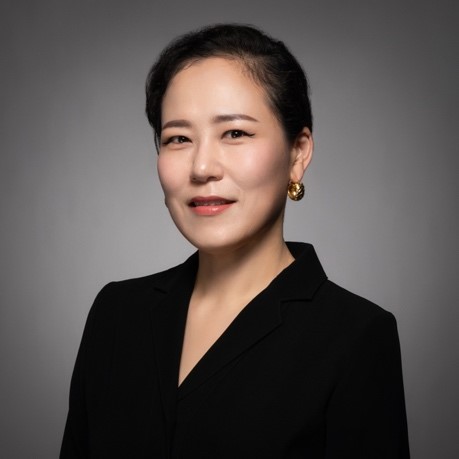Teacher Introduction

MinJoo Baek
MinJoo Baek is an Assistant Professor in the Department of Architecture at XJTLU. As an architectural designer and multidisciplinary educator, her work critically explores the intersections of environment, sustainability, and urbanism. With a strong focus on socio-ecological architecture, her research investigates how cities, buildings, and spatial formations can respond to contemporary environmental and social challenges. She is particularly interested in cultural heritage within urban revitalisation, exploring innovative approaches to preserving and transforming traditional spaces in Asian cities. Through her teaching, she integrates digital tools and collaborative technologies to enhance student engagement, fostering interactive and reflective learning environments in architectural education. Her work aims to bridge the gap between theory and practice, equipping students with the skills to navigate complex design challenges in sustainable and responsive ways.
Key Points
Integrating Padlet (https://padlet.com/) in architectural education enhances student engagement, collaboration, and transparency in group work. This project demonstrates how digital tools can transform teaching practices through interactive and reflective learning experiences.
- Enhances student engagement by facilitating real-time participation and collaboration in design education.
- Improves transparency and accountability in group projects through structured documentation and visible contributions.
- Supports reflective learning by enabling students to track progress, share insights, and engage in peer feedback.
- Encourages interdisciplinary collaboration through case studies showcasing digital storytelling and structured group diaries.
- Aligns with constructivist and collaborative learning theories, providing educators with a framework to integrate technology in teaching effectively.
Technology toolkit: Padlet

Case Details
My innovation integrates Padlet as a collaborative, interactive digital tool in design education, particularly architectural design studios. The inspiration was based on my observation that students often struggle with engagement, peer interaction, and transparency in group work. Architecture education relies heavily on visual representation, iterative design processes, and feedback loops, making it crucial to find a tool that enhances these aspects. I saw the potential of Padlet in facilitating real-time feedback, peer collaboration, and transparent group work tracking. Additionally, the shift to blended learning and digital pedagogy in higher education highlighted the need for interactive tools that foster engagement and accessibility while maintaining a studio-based learning approach. My goal was to create an environment where students feel more connected, accountable, and empowered in their learning.
This innovation addresses three major challenges in architectural education: low student engagement, limited peer interaction, and lack of transparency in group work. By using Padlet, students can easily share design ideas, provide feedback, and track group contributions, ensuring more inclusive and equitable participation. The tool enables real-time formative feedback, which is essential in design-based disciplines where iteration and refinement are key to success. It also enhances collaborative learning by allowing students to observe each other’s work, fostering a deeper understanding of design processes. Ultimately, this approach promotes active learning, digital literacy, and reflective practice, contributing to more engaged, autonomous, and critically thinking students who are better prepared for professional architectural practice.
Students responded positively to this innovation, appreciating the increased transparency, structured feedback, and ease of collaboration that Padlet provided. Many found it more engaging than traditional methods, as it allowed them to track their progress, compare their work with peers, and receive real-time feedback from both instructors and classmates. This sense of visibility and accountability encouraged greater participation, especially from those who might otherwise be hesitant to share their ideas in face-to-face discussions. Additionally, students valued the archived record of discussions and feedback, which helped them reflect on their design development over time. Some students even reported feeling more motivated and confident in presenting their work, as they could clearly see their growth throughout the studio process.
One key takeaway is that technology, when integrated thoughtfully, can enhance rather than replace traditional teaching methodologies. Padlet did not substitute studio-based learning but instead complemented it, fostering more meaningful interactions and deeper engagement. Another realisation was that digital tools should be flexible to accommodate different learning styles. Some students embraced the interactive nature of Padlet, while others needed more structured guidance on how to maximise its benefits. Additionally, the experience reaffirmed the importance of real-time formative feedback and collaborative learning in creative disciplines. Finally, I learned that successful digital innovation depends on clear purpose, structured implementation, and adaptability, ensuring that it aligns with the broader pedagogical objectives of the course.
First, start small and structure activities carefully. Introducing a new tool can be overwhelming, so begin by integrating Padlet into specific tasks, such as brainstorming sessions, peer critiques, or resource sharing. This allows students to gradually understand its benefits without feeling overloaded. Second, encourage active participation and set clear expectations. Students should understand how Padlet contributes to their learning and be encouraged to use it consistently for feedback, documentation, or collaboration. By utilizing Padlet’s multimedia features to accommodate various learning preferences, such as text, images, sketches, and videos, educators can create an inclusive learning experience. When technology is embedded with purpose and intention, it fosters dynamic and interactive learning environments.





Overview
This presentation explores the integration of Padlet in architectural education to enhance student engagement, collaboration, and transparency in group work. It highlights the challenges of traditional teaching methods and how digital tools can foster active participation and real-time feedback. Through case studies on collaborative storytelling and interdisciplinary group diaries, the presentation demonstrates Padlet’s effectiveness in improving peer interaction, documentation, and reflective learning. Grounded in constructivist and collaborative learning theories, it provides practical strategies for educators to incorporate technology into their teaching. The session concludes with key takeaways on the transformative potential of digital tools in higher education.